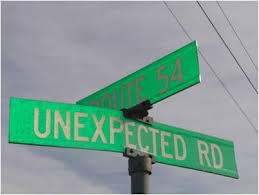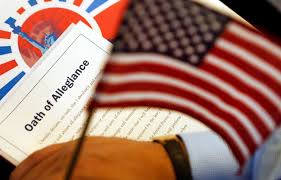
My last blog was about ways to find the living who might have the genealogical information you need without making them feel threatened that their privacy had been invaded. Today, I’m thinking about how much more private our lives are then in the past. Thomas MacEntee mentioned this, too, in an interactive webinar he recently did. If you don’t believe that, check out an old newspaper and you just might find something like this:
 1
1
 2
2
 3
3
 4
4
 5
5
These are just a few of the times that George Harbaugh was noted in three local papers between 1900-1909. From the first notice we know that there were two individuals who were professors who traveled together to Missouri. Today, a notice like this would alert burglars and the professors might return home to find a break in had occurred.
The second item confirms that George was an educator. Did they send junk mail back in the day? He’s fortunate that there were no big box office supply stores sending him ads based on his job description.
Next item lets us know not only his residence but that he has a son with the same name and that they visited Plymouth, Indiana. Great information from a genealogical standpoint; we’ve got relationship confirmation! The fourth notice lets us know that George visited nearby Walkerton, Indiana on a Saturday. Together, both notices are kind of creepy. Can you imagine every time you leave your town that it would be published in your local newspaper?! Sure with public figures, every movement is tracked and reported today but George wasn’t famous. Looking at the other statements surrounding George’s show that this was common practice; we know that G.S. St. John of Tipecanoe also visited Plymouth and Ed Cook purchased from William Burger a “fine carriage.” Seriously, when you buy a new vehicle or a major appliance, we certainly wouldn’t expect it to be published in the newspaper.
Today, we continue the practice of placing family relationship information and residence locations in obituaries as item 5 did. We can connect George to his father and two of his brothers. Another clue to finding George’s whereabouts on a Sunday might be the Dunkard church as that’s where his father, grandpa Harbaugh, attended. Since grandpa lived with George more information about George might be found there. Again, nice for a genealogist and even nicer for a crook who knew the family wouldn’t have been home during church service. Don’t think they had robberies in those days? George’s aunt, Mary Ann Eyster Johnson, wrote in her diary on 10 April 1898 that “Today we found that the Meeting House had been robbed. Tablecloths, aprons, dishes, knives, and forks and baskets all gone. No clue to the robbery.”6 Interestingly, I never found the story of the church robbery in the newspaper.
Clearly, it was not just a slow news day but a standard practice to record the comings and goings of residents a century plus ago. Your personal whereabouts is fairly safe these days, although it can be gleaned from public records courtesy of your property appraiser. Don’t despair, so is your neighbors! The only difference between property records now and in the past is we can look the information up quickly using the internet instead of having to drive to the assessor’s office.
Although our privacy is more assured, future genealogists will not find the gems that we do in newspaper archives. All the more reason for you to start writing about yourself!
1 “Lapaz Items,” Marshall County [Indiana] Independent, 27 April 1900, p. 5, col. 5.
2 “Lapaz Items,” The Plymouth [Indiana] Tribune, 2 July 1903, p. 4, col. 4.
3 “Saturday,” The Plymouth [Indiana] Tribune, 1 September 1910, p. 5, col 2.
4 “Saturday,” The Weekly [Walkerton, Indiana] Republican, 14 March 1912, p. 2, col 3.
5 “Lapaz Items,” The Plymouth [Indiana] Tribune, 28 January 1909, p. 5, col. 6.
6 Mary Ann (Eyster) Johnson, “Diary,” 10 April 1898, n.p.; privately held by the Pine Creek Church of the Brethren, North Liberty, St. Joseph County, Indiana.



 2
2 4
4 5
5





